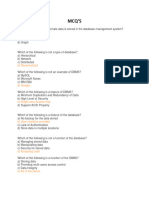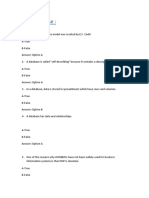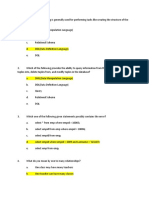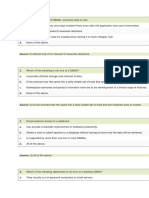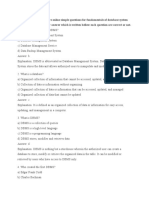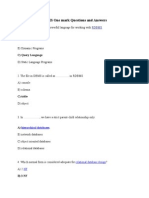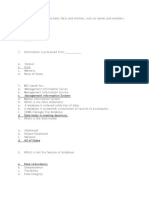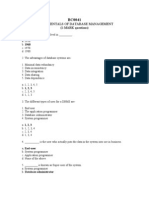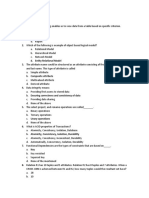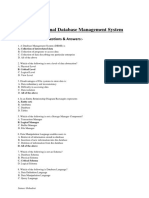0% found this document useful (0 votes)
80 views20 pagesDBMS Practice Questions
The document consists of a series of practice questions related to Database Management Systems (DBMS), covering various topics such as definitions, types, functions, and features of DBMS. It includes multiple-choice questions that test knowledge on concepts like relational databases, integrity constraints, normalization, and SQL commands. The questions are designed to assess understanding of both theoretical and practical aspects of database management.
Uploaded by
agnihotrad123Copyright
© © All Rights Reserved
We take content rights seriously. If you suspect this is your content, claim it here.
Available Formats
Download as PDF, TXT or read online on Scribd
0% found this document useful (0 votes)
80 views20 pagesDBMS Practice Questions
The document consists of a series of practice questions related to Database Management Systems (DBMS), covering various topics such as definitions, types, functions, and features of DBMS. It includes multiple-choice questions that test knowledge on concepts like relational databases, integrity constraints, normalization, and SQL commands. The questions are designed to assess understanding of both theoretical and practical aspects of database management.
Uploaded by
agnihotrad123Copyright
© © All Rights Reserved
We take content rights seriously. If you suspect this is your content, claim it here.
Available Formats
Download as PDF, TXT or read online on Scribd
/ 20





